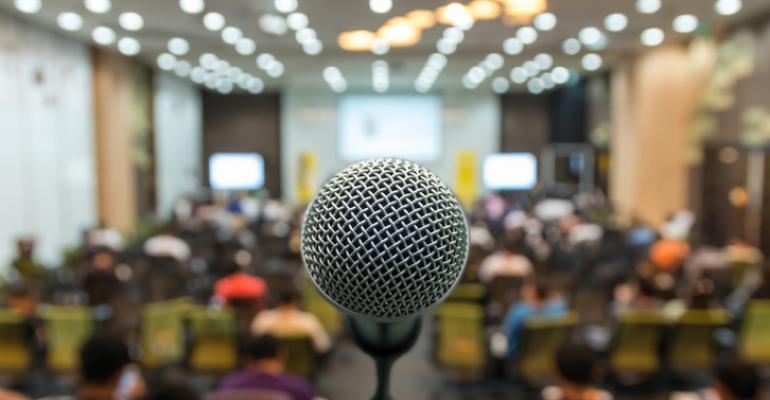If you hire speakers for corporate events, you know that choosing the right one for your audience is just the first step. As a 30-year veteran of the podium, working as a corporate put-on comedian, I’ve learned plenty of lessons about the what can go right and wrong on stage. Here is some of my favorite advice for ensuring that speakers have the best chance to succeed.
Connect Speaker and Client
Once you’ve hired your speaker, or even before, have them talk with the client so they are both on the same page, and the client is comfortable with all content. Some speakers customize more then others. Prominent celebrities and high-level politicians are more likely to only offer a canned speech. There is not anything necessarily wrong with that, but you should know that going in and get as much information about their content ahead of time as possible.
Logistics
To help your speakers give a great performance, get them to the destination early so they are rested and refreshed by the time they go on.
If possible, get them there the night before. Not only does the speaker get a good night’s sleep, but it also eliminates worry about possible travel delays. From my perspective, it’s also useful to be there to see some of the other presentations to get a taste of the topics and a feel for the audience.
Audiovisual
Any speaker worth his or her salt will want to check the room and audiovisual equipment before the presentation, especially if they include PowerPoint or video. Also, a rehearsal allows you to adjust the volume controls before the speech, whether for a video, podium mic, or wireless lav, and for the speaker to get a feel for the stage or the podium ahead of time.
Make sure you have a good sound system and fresh batteries in the wireless microphone. I can’t tell you how many times I’ve had the wireless die on me. There should always be a backup.
Room Sets
I like an auditorium-style room setup. It maximizes the number of people you can place close together while minimizing dead space when the room is filled. If it’s not, try to get the audience to sit up front and create a more unified situation. The closer the audience is to the speaker and to one another, the greater their reaction and attention will be.
The worst thing you can do to speakers is to have them too far from the audience or have dead space in the front of the room. I’ve spoken at events that had a dance floor in the middle that divided the audience into separate parts, making it much less cohesive and, as a result, less reactive.
Lighting
It’s best if the speaker and podium are well lit, and the audience lighting is dim, but not completely dark. This helps the audience focus its full attention up front since the speaker is the brightest thing in the room. Also with dim lighting, speakers can see the audience’s reaction, allowing them to adjust as they go along.
Sometimes, I’m in a situation where there is no spotlight or special lighting, but only the hotel track lighting. This usually doesn’t allow for the speaker and the audience to be lit at different levels. In that case, I usually set everything somewhere in the middle. I may not be as bright as I’d like, but it keeps the audience from having too much glare on them.
Timing
Finally, if you have the event at a breakfast, lunch, or dinner, make sure that everyone is done eating and the wait staff has cleared the dishes. It’s a simple thing. If people are chewing and clanking dishes, they’re going to be distracted from the presentation. While some planners want to squeeze as much content in as they can by having speakers during meals, it is extremely counterproductive.





